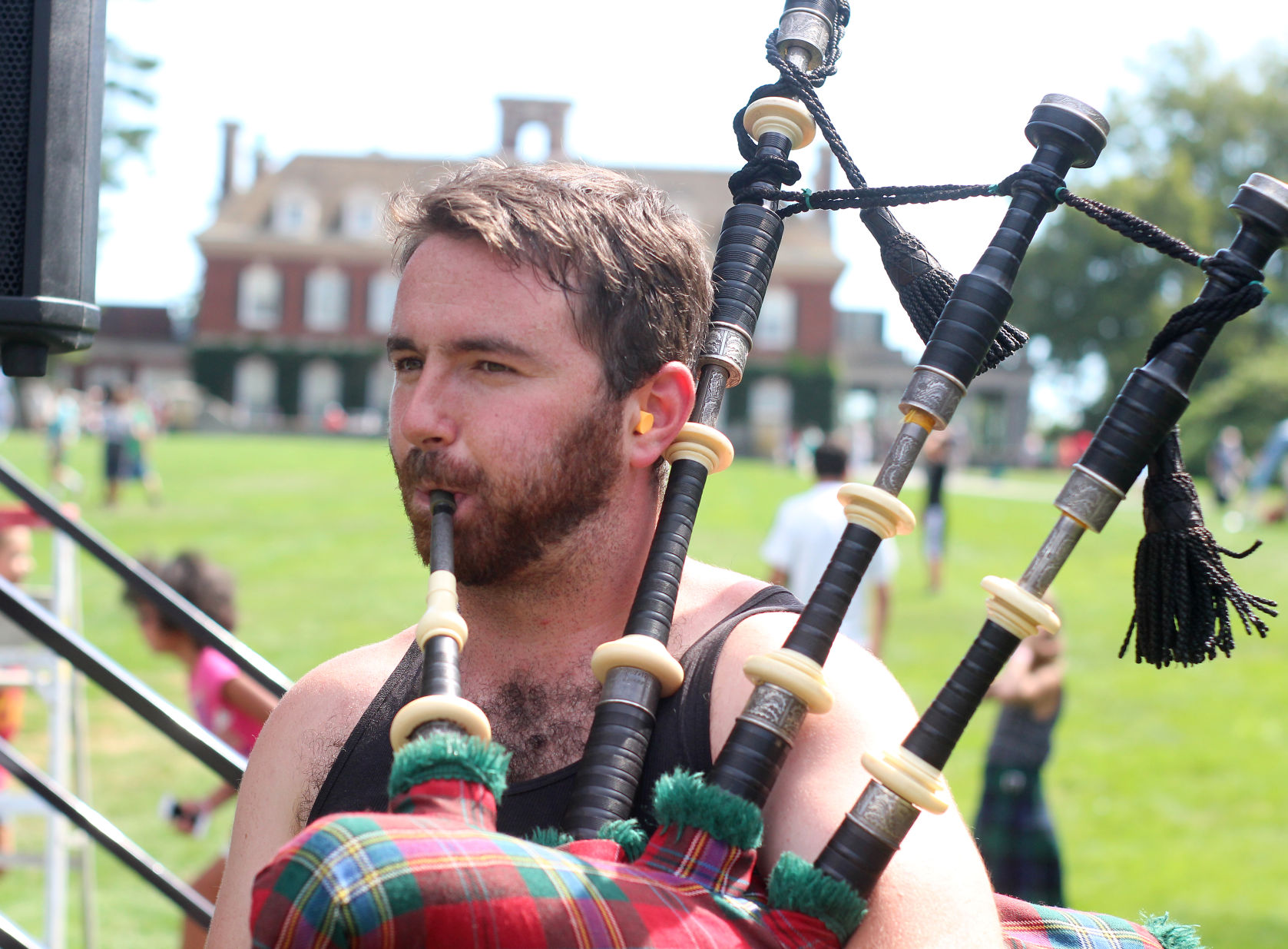Old Westbury Gardens was teeming with kilts and cabers on Saturday for the 56th annual Long Island Scottish Festival and Highland Games.
The event, which brought in over 6,000 people, marked the 40th time the festival was held on the historic greens, and it was rich with Gaelic-inspired music, dancing and food.
“It was a great day, and it seems that most of the people had a great time,” said Clan MacDuff Chief Andrew McInnes, whose organization sponsors the event.
People flocked to the festival from near and far, like competitors in the country’s rustic, heavyweight sports.
Shawna Mendelson, a power lifter and gym owner from Bohemia, visited the festival for the third time to compete in the Highland games.
“It’s a fun festival,” she said. “People are great, we’ve got a great group of people who we all compete with, and we got some new faces this year also which is really cool.”
One of the games she took part in was the sheaf toss, which requires throwing a weighted burlap bag with a pitchfork over a raised bar.
Her six years of experience as a competitive thrower helped her master the sport, she said.
She placed first in the women’s sheaf toss, caber toss, and was named one of the athletes of the day.
“With the sheaf you have to be strong, and you have to have strong pop,” Mendelson said. “Technique is just keeping loose hips, and literally driving through like you’re doing a strong jerk.”
Throwers swing from side to side with the sheaf on the end of the fork as they build momentum.
After a few swings, the sheaf is released on the upstroke, and it must clear the bar without touching it.
Competitors usually get three tries, and whoever successfully tosses moves to the next round, where the bar is raised.
Some other classic games that took place were putting the stone, which most know as shot put, and the caber toss, which involves flipping a heavy, 20-foot-long log.
Of course, no Scottish festival would be complete without an abundance of kilts, and numerous people like the Highland game competitors and spectators adorned the traditional garb.
Vendors sold handmade kilts from tents throughout the grounds, and one kilt-maker gave a presentation on the history of the iconic look.
Bonnie Heather Greene creates custom-made kilts through her Mahopac-based business called Kiltmaker.
She has been making kilts in the traditional way for 10 years, she said, and during the festival she offered her knowledge about the topic.
One thing she did was clear up some of the misrepresentation of kilts in popular media, like Mel Gibson’s portrayal of Scottish figure William Wallace in Braveheart.
“In the movie he’s wearing a rustic kilt, but actually at that point in time they didn’t really have kilts in Scotland,” Greene said. “Instead they wore a long, linen tunic kind of thing.”
The beginnings of the kilt came to be in the early 1700s, roughly 400 years after Wallace’s famous rebellion, she said. The kilt began as a long piece of fabric called a “long plaid” which was used during the cold months in Scotland, she said.
“In the old days they would just wrap it around themselves when it was really cold, but then they realized they could also tie it around themselves; So that’s called a belted plaid,” Greene said.
The belted plaid was longer and typically draped, but as the Industrial Revolution arrived in the 1800s, kilts shortened to be more practical in the factories, she said. This “little kilt” was the prototype fro the classic kilt seen today.
For entertainment bagpipe troupes marched through the grounds for most of the day, and Celtic roots band MacTalla Mor played on the main stage.
New York City-based dancing company Shot of Scotch also performed traditional Scottish dances to a crowd of festival-goers.
Proceeds will fund next year’s event and Old Westbury Gardens, while extra funds benefit local charities like Island Harvest and Ronald McDonald House.



